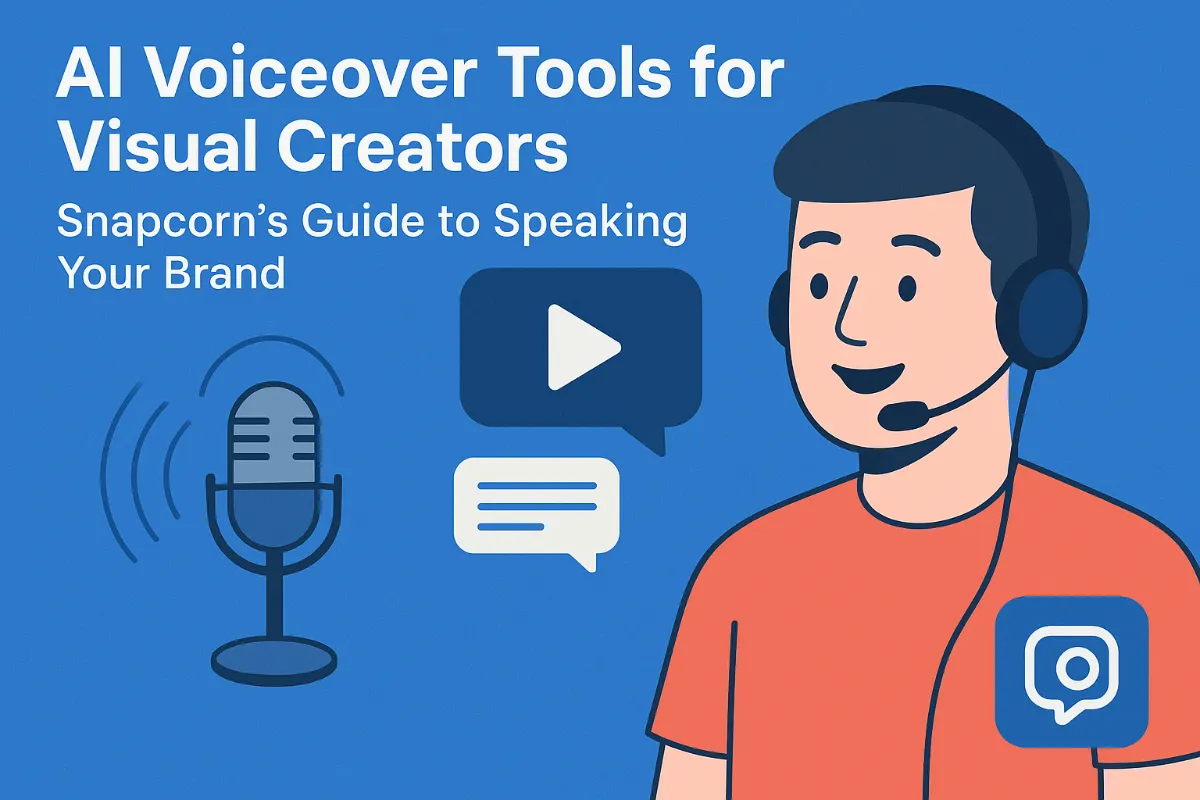Unveiling Blind Image Restoration Techniques: A Photographer's Guide to Reviving Damaged Images with AI
Introduction to Blind Image Restoration
The quest to restore damaged photos is as old as photography itself. But what if the damage is so extensive that the cause itself is a mystery?
Blind image restoration is the process of recovering images when the exact nature of the damage is unknown. This means dealing with imperfections like blur, noise, and compression artifacts without knowing their specific parameters. It's a common problem in real-world photography, where the source of degradation is often unclear or complex.
- A key challenge is identifying and addressing various types of image degradation. Common examples include:
- Blur: Can arise from camera shake, subject movement, or focus issues.
- Noise: Often introduced by low-light conditions or sensor limitations.
- Compression Artifacts: Visible distortions resulting from lossy compression methods.
Traditional image processing techniques often fall short when applied to blind image restoration. This is because these techniques rely on knowing the specific degradation function.
- Traditional methods struggle when the degradation function is unknown, making them less effective for real-world images.
- ai excels at learning complex patterns and priors from data, allowing it to estimate the degradation function and restore images more effectively.
- ai models offer flexibility and adaptability, handling a wide range of degradation types without needing specific pre-programming.
ai's capacity to adapt and learn makes it an invaluable tool for photographers seeking to revitalize their damaged images. As ResearchGate notes, ai can enhance images through techniques like particle swarm optimization. Particle swarm optimization (PSO) is a computational method inspired by the social behavior of bird flocking or fish schooling. In image restoration, it's used to find the optimal parameters for a model that can estimate the unknown degradation function (often denoted as 'H'). Think of it as a swarm of "particles" searching through possible solutions to find the best fit for how the image was damaged, helping to reverse that damage.
This guide will delve into the core concepts of blind image restoration and explore how both traditional and ai-driven approaches tackle these challenges.
Core Concepts in Blind Image Restoration
Damaged photos can feel like lost memories, but digital technology offers ways to restore them. Understanding the core concepts behind these techniques is crucial for effective image revival.
At the heart of blind image restoration lies the challenge of understanding degradation models. These models mathematically represent how an image becomes corrupted.
- The basic formula is: y = H(x) + n, where:
yis the degraded imagexis the original, pristine imageHis the degradation functionnis the noise added during degradation.
mermaid
graph LR
A[Damaged Image] --> B(CNN);
B --> C{Trained on Large Dataset};
C --> D[Restored Image];
The "Trained on Large Dataset" step means the CNN learns from thousands or millions of example images, figuring out what typical image features look like and how different types of damage manifest. This allows it to recognize and fix those issues in new images.
Practical Considerations for Photographers
Choosing the right blind image restoration technique and the appropriate software are crucial steps for photographers aiming to revive damaged images. The best approach depends on several factors unique to each situation.
When selecting a technique, start by assessing the type of degradation present in your image. Is it primarily blur, noise, compression artifacts, or a combination? Different techniques excel at handling specific types of damage.
- Computational resources also play a key role. Some advanced techniques, particularly those involving deep learning, require substantial processing power and memory.
- Finally, consider the desired quality of the restored image. Some methods may offer faster results but compromise on the final image quality, while others may take longer but produce superior outcomes.
Photographers often face trade-offs between speed, accuracy, and complexity. For example, variational methods can be effective for reducing noise while preserving edges, but they may struggle with severe blur.
Deep learning models can handle complex degradations but demand significant computational resources and large training datasets. Choosing a method involves balancing these trade-offs based on your specific needs.
A wide array of software and libraries cater to blind image restoration. Software like Adobe Photoshop and GIMP offer a range of manual and ai-assisted tools for addressing common image issues.
Cloud-based image restoration services are also gaining popularity. Platforms like Topaz Labs (with tools like DeNoise AI and Sharpen AI, often accessible via their Photo AI suite) or online services that leverage ai for restoration offer powerful processing capabilities without requiring users to invest in expensive hardware. As ai continues to evolve, more sophisticated and user-friendly tools will emerge, further democratizing access to advanced image restoration techniques.
The next section will explore how to evaluate the results of blind image restoration and refine your approach for optimal image quality.
Evaluating Restoration Results
Evaluating the success of blind image restoration requires a keen eye and a solid understanding of image quality metrics. How do you know if an ai has truly revived a damaged photo?
Objective metrics offer a numerical way to assess image quality by comparing the restored image to a known reference or by evaluating certain characteristics. These metrics provide a consistent and quantifiable measure of improvement.
- Peak Signal-to-Noise Ratio (PSNR): PSNR measures the ratio between the maximum possible power of a signal and the power of corrupting noise. A higher PSNR value generally indicates a better restoration, with less visible noise or distortion.
- Structural Similarity Index Measure (SSIM): SSIM evaluates the perceived change in structural information between two images. It considers factors like luminance, contrast, and structure, providing a more perceptually relevant measure than PSNR.
- Learned Perceptual Image Patch Similarity (LPIPS): LPIPS uses deep learning to measure perceptual similarity. It compares image patches and reflects human perception more accurately than traditional metrics but may not always align perfectly with subjective opinions.
While objective metrics are useful, subjective evaluation remains a critical part of assessing image restoration. After all, the ultimate goal is to produce visually pleasing and realistic results, which sometimes escapes pure numerical analysis.
- The importance of visual inspection: Always examine the restored image carefully. Look for improvements in clarity, detail, and the reduction of artifacts.
- Common artifacts and distortions to watch out for: Be vigilant for unnatural patterns, excessive smoothing, or color distortions that can detract from the image's realism.
- Assessing the naturalness and realism of the restored image: Does the restored image look like a naturally captured photograph? Or does it have an overly processed or artificial appearance?
Remember, a combination of objective and subjective measures ensures a comprehensive assessment of blind image restoration quality.
Future Trends and Challenges
The world of blind image restoration is rapidly changing, with ongoing research pushing the boundaries of what's possible. What new trends and obstacles can photographers expect as ai continues to evolve?
Emerging architectures like GANs (Generative Adversarial Networks) and diffusion models are continuously refined. Researchers are exploring ways to make these models more efficient and effective. As ai progresses, we can anticipate even more sophisticated methods for handling complex and unknown degradations.
Self-supervised and unsupervised learning techniques hold immense potential. These approaches reduce the need for large, labeled datasets, which can be costly and time-consuming to obtain. This is particularly useful in fields like medical imaging, where labeled data is scarce due to privacy concerns and the need for expert annotation.
Domain-specific restoration tailors ai models to specific types of images, such as portraits or landscapes. Imagine a model trained exclusively on historical photos, learning the unique characteristics and imperfections of that era. This specialization leads to more accurate and visually pleasing results, as the ai understands the nuances of each domain. For instance, a model trained on historical photos might learn to better handle the specific types of fading, color shifts, or paper artifacts common to that period, resulting in a more authentic restoration than a general-purpose model.
Extreme degradation and complex scenarios still present significant challenges. Think of images with severe blur, extensive noise, or a combination of multiple degradations. Future research will focus on developing models capable of handling these extreme cases, potentially through novel architectures or training techniques.
Computational cost and accessibility remain barriers to widespread adoption. Training and running complex deep learning models often require significant computing power and memory. More efficient algorithms and cloud-based solutions can help democratize access to these powerful tools.
Potential biases in ai models raise ethical concerns. If a model is trained primarily on images of one demographic group, it may perform poorly on images of others. Careful attention to dataset diversity and fairness metrics is crucial to avoid perpetuating existing biases.
ai's role in blind image restoration is set to increase, but photographers must stay informed about its capabilities and limitations.
Conclusion
ai-driven blind image restoration is more than a trend; it's a fundamental shift in how photographers can approach damaged images. This technology empowers photographers to recover lost details and breathe new life into seemingly unsalvageable memories.
ai brings several key advantages to image restoration.
- Adaptability: ai algorithms learn from vast datasets, allowing them to handle diverse types of degradation without needing specific pre-programming.
- Efficiency: ai automates complex processes, saving photographers time and effort compared to manual restoration techniques. For example, tasks like extensive noise reduction or complex artifact removal that once took hours of painstaking manual work can now be done in seconds with ai.
- Accessibility: User-friendly ai tools enable photographers of all skill levels to achieve professional-quality results.
Photographers who embrace ai for image restoration should keep several points in mind.
- Understanding Limitations: While ai excels at many tasks, it's not a magic bullet. Extreme degradation or complex scenarios may still require manual intervention.
- Ethical Implications: As ai becomes more powerful, addressing potential biases and ensuring responsible use is crucial.
- Continuous Learning: The field of ai is constantly evolving, so staying informed about new techniques and tools is essential.
Ultimately, the best way to understand the power of ai in image restoration is to experiment. Try different tools, explore various techniques, and develop your own workflow for reviving damaged photos.
By understanding both the capabilities and limitations of ai, photographers can leverage this transformative technology to preserve and enhance their visual legacy. The journey of image restoration is evolving, and ai is leading the way, promising even more intuitive and powerful tools for photographers in the near future.




